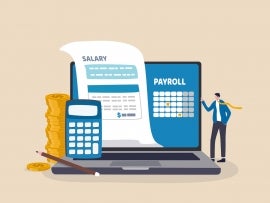TechRepublic’s Karen Roby spoke with Dan Hays of PricewaterhouseCoopers about the status of 5G coverage and the potential of 6G. The following is an edited transcript of their conversation.
Karen Roby: Despite challenges associated with COVID-19, 5G coverage has increased as expected. Let’s talk 5G. I know you guys at PwC have some new findings that you put together in a study recently. Where do we stand with 5G?
SEE: TechRepublic Premium editorial calendar: IT policies, checklists, toolkits, and research for download (TechRepublic Premium)
Dan Hays: I like to think of 5G today at the beginning of 2021, as a bit of a teenager. It’s really in its adolescent period where it’s here, it’s asserting its independence, and we’re seeing a lot of it. But, at the same time, it’s not really quite mature. And we’re seeing a lot of growing pains as we continue to go into it.
To put some numbers behind it, about three quarters of the United States’ population has access to 5G today. You can get it at your house, you can get it at your home. If you go out for a drive in the countryside, odds are, you don’t have a 5G signal today. But you can get it where you want it. The question is how many people really are using it, and how good is it so far? So, in terms of people using it, our estimate is it’s probably, at this point, a little north of 8% of mobile subscribers in the U.S. that have a phone that’s capable of connecting to 5G. And then, when you look at the actual usage, it’s a bit uneven because the experience isn’t quite all there yet. Quite frankly, the 5G that you get today feels a lot like the 4G that you had yesterday. And, in some cases, it’s really not offering a better experience, although it’s getting better day by day. Just like those pesky teenagers.

Image: PwC
Karen Roby: I hope it’s not as grumpy as my teenage boy seemed to be. We all understand how that goes. You mentioned 8% of mobile users. I mean, is that the number you would have expected it to be at? Or did we think—obviously, we didn’t count on COVID supply and demand issues and all of that kind of stuff, infrastructure. Is this where we thought we’d be?
Dan Hays: COVID has definitely thrown a wrench in the adoption of 5G. Both because of the economic impacts, quite frankly, a lot of people just don’t have $1,000 to drop on a new mobile device right now. At the same time, there have been some supply chain hiccups earlier on in 2020 that reduced the number of devices and the number of network elements that could be bought and deployed to bring 5G networks to us.
But the reality is, the gating factor for that number, that 8% of users, really has less to do with either of those things and more with just the fact that there’s not yet a compelling value proposition for the end user. What are they going to get with 5G that’s different and better than what they get with their 4G devices? For a lot of people that’s just not clear yet. And if they’re going to drop the money to upgrade, especially if they’re not getting a free phone, or something, or they’re still under contract for their old device, in many cases for the end user, they’re better off to wait until they’re eligible for an upgrade. And there’s a little more clarity on just what 5G will do for them.
SEE: Future of 5G: Projections, rollouts, use cases, and more (free PDF) (TechRepublic)
Karen Roby: I think so many people, we’ve been hearing the hype now for several years, and so they’re expecting something and whether or not that’s what they’re getting, I think is another story. You touched on the networks. The coverage has increased of course, as expected, but the performance of the networks using the technology is a bit uneven. Talk about that a little bit.

Image: PwC
Dan Hays: Uneven is a great description. Unlike prior generations of mobile technology, 5G has been rolled out really using a bit of a hodgepodge of mobile spectrum. And that means that for some of the operators, you’ll get a really great signal anywhere you go, but it might not be that fast. And for other operators, you might get a lightning fast signal if you’re in a really dense city center, or urban area. But once you step a couple of blocks one way or the other, you probably have nothing. So, that’s a really big challenge for end users right now is just that unevenness of experience.
We like to say the hype has outpaced the reality. Now, the reality will catch up, but it may take another two or three years to really get to the point where it’s a truly different and better experience.
Karen Roby: Yeah. And the digital divide here, Dan, I mean, how has that been highlighted?
Dan Hays: Yeah, it’s a very hot topic in the telecom industry these days. And, in particular, in the United States, the FCC just ran a process to deploy about $9 billion out to un-served and underserved communities around the United States. And 5G will be an important piece of that solution.
But, right now, if you see where 5G is being deployed, a lot of it is happening, quite frankly, in the dense, urban and economically advantaged parts of the United States. While there was a lot of promise of 5G being used to close the digital divide, whether it was for economically depressed urban areas, or whether it was for rural America, there just hasn’t been coverage that’s been widely rolled out to those locations yet.
SEE: 5G: What it means for edge computing (free PDF) (TechRepublic)
Now, help is coming. We’ve had some new spectrum auctions over the past year, including one that just wrapped up recently with record proceeds to the US Treasury. And that will help and go a long way for us to see more 5G for areas that just don’t have a lot of broadband coverage today, or mobile services available. But it’s going to take some time for that to really make a dent.
Karen Roby: And I’d be remiss if I didn’t, before we jump off here Dan, to ask about 6G. More and more now, we’re hearing bits and snippets about what this means. How do you describe to somebody what 6G is all about? Will it really mean anything to them? And where are we with that?
Dan Hays: Boy, if you thought that the 5G hype cycle was ahead of the curve for 6G to be there is really just shocking.
The reality is that 6G today is really a concept, or a family of concepts. There’s not a specification around it. Nobody knows what it will be. In some ways, it’s kind of like this amorphous cloud that we all hear about when we talk about online stuff, 6G is much the same. What we know about 6G is that it’s going to push the limits when it comes to speed. So, take 5G is about call it 10 times as fast as 4G, if we get it rolled out fully. 6G aspires to have a similar advantage over 5G. And then, on top of that, 6G aspires to use some really new novel technologies and spectrum that, quite frankly, haven’t even been fully tested and proven at this point.
So, it’s really a concept. There are a lot of great companies around the world that are starting to invest in this, to talk about it. But we’re still probably a good seven or eight years away from even understanding what it really is going to be and starting to see some of it taking hold.
Karen Roby: Well, no doubt, there will be a lot of hype just as there has been with 5G, and people just wanting to talk about it. We’re always wanting to talk about the next best thing and what’s to come, even if we still haven’t really made our way through what we’re currently trying to get into.
Dan Hays: Yeah, absolutely. There’s always something new in the tech industry. So, certainly more to come.

Image: iStockphoto/kynny






